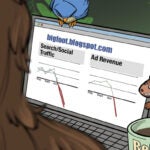I’ve never been a huge fan of listening to podcasts. But I do like watching them.
I recently found a live comedy podcast series called “Kill Tony” on YouTube. In addition to being an ad tech reporter, I’m also a comedian, so it was my duty to examine the ad experience.
Before each episode of “Kill Tony,” members of the audience put their name in a hat for the chance to perform one minute of standup onstage. The show’s audio recording is posted as a podcast to Spotify, and the videos are uploaded to YouTube.
The show monetizes through paid brand sponsorships voiced by the “Kill Tony” hosts in both the audio and video productions. Recent advertisers include big names, like Manscaped, Talkspace, Unilever-owned Liquid I.V., DraftKings, ZipRecruiter, ExpressVPN and Credit Karma, to name just a few examples.
Host-read ads are a staple of podcasting, but they have a different – and compelling – flavor when converted into video form.
Two senses are better than one
Nearly half of all podcasts have at least 80% host-read ads, according to MediaRadar, and it’s clear why.
Audiences respond to host-read ads because they have a more organic feel than traditional ad delivery and generate a 71% brand recall rate compared with 62% for ads from external sources, as per Nielsen’s data.
Higher recall combined with the brand awareness and reach that video is known for is an attractive prospect for brands, including large national advertisers. The “Kill Tony” YouTube channel has roughly 500,000 subscribers, and the audio podcasts generate around one million downloads per month.
Every “Kill Tony” episode includes two in-stream brand sponsorships that are each two minutes long and comprised of a video ad with host-read audio. Viewers (and listeners) can learn a lot more about a brand’s product in two minutes than during a classic 15- or 30-second spot.
ExpressVPN, for example, sponsored a two-minute exposé on the fact that Google Chrome’s Incognito mode apparently doesn’t mask IP addresses … but guess who does? Meanwhile, a two-minute Liquid I.V. ad gave me a lot more intel on what people really use that product for. (Hint: as a hangover cure.)
Double-edged sword
But you’re probably thinking: Four straight minutes of paid promotion? No thanks. Skip.
And, yes, plenty of people do just that by scrubbing right past the ads.
Even the hosts of “Kill Tony” recognize that most people don’t want ads during a comedy show, which is why they switched from airing the promos live to recording the callouts later.
Yet not all viewers skip through the sponsored promos. Even if they’re technically ads, they’re still part of the comedy routine, complete with natural and playful banter between the show’s hosts. (You can guess what type of internet history the hosts joked about hiding with ExpressVPN.)
Plus, nearly all the promos include discount codes.
Believe me, I could live without ever hearing the word “authenticity” again, but the concept applies to host-read ads the same way it does to TikTok influencer marketing – and maybe even more so. Audiences are receptive to information about a brand that comes directly from a creator as opposed to the brand explicitly advertising itself.
Even so, ads are still ads, humor aside – and the question of whether an audience would still watch them if given the choice remains an active debate. (See this recent thread on Reddit.)
What I’m wondering is: Are the sponsors of “Kill Tony” and other podcast/video hybrid shows actually seeing a return on ad spend?
ALSO: You can catch me at the Cynopsis Measurement & Data Conference in New York City next month. I’ll be moderating a panel about CTV measurement on Wednesday, June 14. Check out the agenda here. AdExchanger readers get a 25% registration discount with the code ADEXCH25.
Let me know what you think. Hit me up at alyssa@adexchanger.com.
















